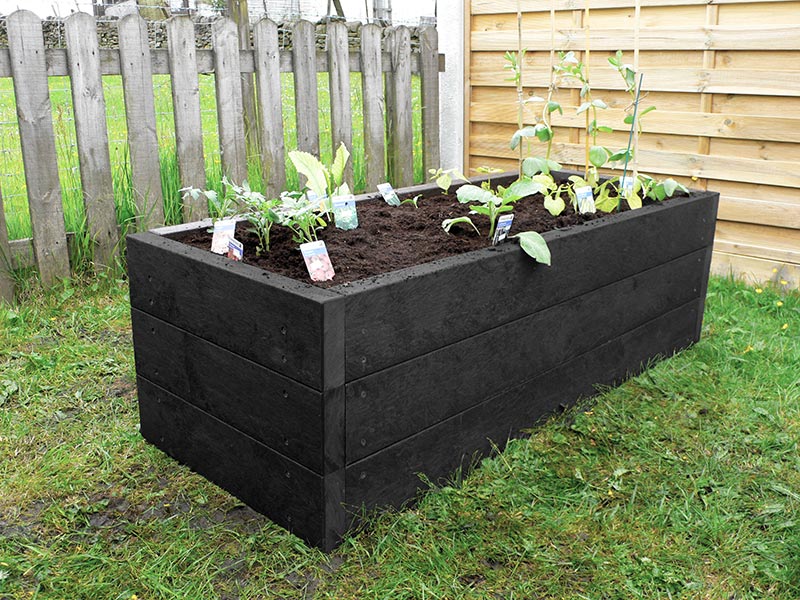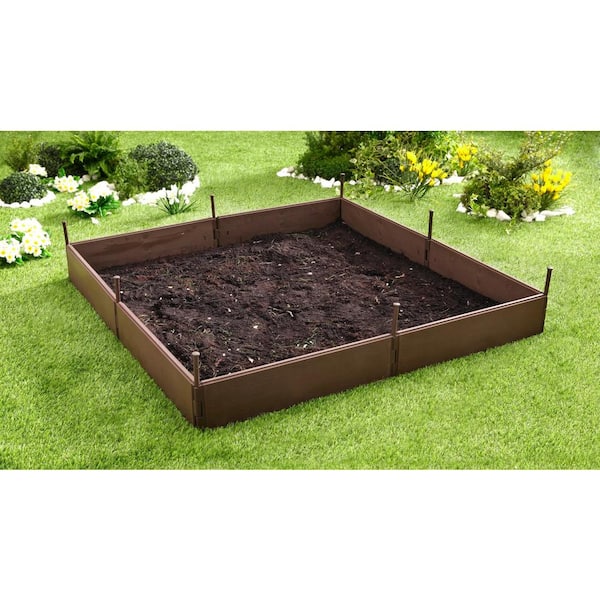How To Build Longlasting Raised Garden Beds
Raised garden beds are a great way to improve your gardening experience. They can help you save space, improve drainage, and make it easier to garden on uneven ground. If you're looking for a long-lasting raised garden bed, there are a few things you need to keep in mind.
The Right Material
The material you choose for your raised bed will have a big impact on its lifespan. Some of the most durable materials for raised beds include:
- Wood: Wood is a natural material that is both strong and attractive. However, it is important to choose a type of wood that is rot-resistant, such as cedar or redwood.
- Concrete: Concrete is a very durable material that can last for many years. However, it can be difficult to work with and can be heavy.
- Plastic: Plastic is a lightweight and low-maintenance material that is easy to clean. However, it may not be as durable as wood or concrete.
The Right Size
The size of your raised bed will depend on the amount of space you have available and the types of plants you want to grow. For most vegetables, a raised bed that is 4 feet wide, 8 feet long, and 2 feet high is a good size.
The Right Foundation
If you are building a raised bed in an area with poor drainage, you will need to create a foundation to help improve drainage. This can be done by digging a trench around the perimeter of the bed and filling it with gravel or rocks.
The Right Construction
Once you have chosen your material and size, you can start building your raised bed. The construction method you use will depend on the material you have chosen. For wood beds, you will need to cut the boards to the desired size and then assemble them using screws or nails. For concrete beds, you will need to mix the concrete according to the manufacturer's instructions and then pour it into the desired shape. For plastic beds, you will simply need to assemble the pieces according to the instructions.
The Right Soil
The soil you use in your raised bed is important for the success of your garden. You will need to use a soil that is well-drained and rich in nutrients. You can amend your existing soil with compost or other organic matter to improve its quality.
The Right Care
Once your raised bed is built, you need to care for it properly to ensure that it lasts for many years. This includes watering your plants regularly, weeding the bed, and adding compost or other organic matter to the soil as needed.
Conclusion
Building a long-lasting raised garden bed is a relatively simple project that can be completed in a weekend. By following the tips in this blog post, you can create a beautiful and functional addition to your garden that will provide you with years of enjoyment.
Are you looking for long lasting raised garden beds? Visit our website Home Gardening to learn more about our high-quality, durable raised garden beds. Our beds are made from high-density polyethylene (HDPE), which is a weatherproof and UV-resistant material that will last for years to come. They are also easy to assemble and maintain, making them a great choice for even the most beginner gardeners.
In addition to our long lasting raised garden beds, we also offer a variety of other gardening products, including soil, fertilizer, and gardening tools. We have everything you need to get started with your own successful garden.
Visit our website today to learn more about our long lasting raised garden beds and other gardening products.
FAQ of long lasting raised garden beds
- What is the best material for a long lasting raised garden bed?
The best material for a long lasting raised garden bed will depend on your climate and budget. Wood is a popular choice because it is relatively inexpensive and can be easily worked with. However, wood can rot over time, so it is important to use a rot-resistant species such as cedar or redwood. If you live in an area with harsh winters, you may want to consider using a more durable material such as concrete or masonry.
- How can I make my raised garden bed last longer?
There are a few things you can do to make your raised garden bed last longer:
* Use rot-resistant materials.
* Build your bed to the correct height. A height of 12-18 inches is ideal for most plants.
* Use a good quality soil mix. A well-draining soil mix will help to prevent rot and pests.
* Mulch your bed regularly. Mulch will help to keep the soil moist and suppress weeds.
* Protect your bed from the elements. If you live in an area with harsh winters, you may want to cover your bed with a tarp or other protective covering.
- What are some common problems with raised garden beds?
Some common problems with raised garden beds include:
* Rot. Wood beds are susceptible to rot, especially if they are not made from rot-resistant materials.
* Pests. Raised beds can attract pests such as rodents, rabbits, and insects.
* Erosion. Raised beds that are not properly anchored can be susceptible to erosion.
* Drainage problems. Raised beds that are not properly drained can develop waterlogged soils, which can lead to root rot.
- How can I solve common problems with raised garden beds?
To solve common problems with raised garden beds, you can:
* Use rot-resistant materials.
* Protect your bed from pests. You can do this by installing fencing or netting around your bed, or by using pest-repelling plants.
* Anchor your bed properly. You can do this by using stakes, bricks, or other heavy objects.
* Improve drainage. You can do this by adding sand or gravel to the bottom of your bed, or by installing a drainage system.
Image of long lasting raised garden beds
- Western red cedar raised bed. Western red cedar is a naturally rot-resistant wood that can last for many years. This bed is made from pressure-treated cedar planks that are 2x6 inches in size.

- Galvanized steel raised bed. Galvanized steel is another durable material that can withstand the elements. This bed is made from 16-gauge galvanized steel sheets that are welded together.

- Concrete raised bed. Concrete is the most durable material for a raised bed, but it is also the heaviest. This bed is made from concrete blocks that are stacked on top of each other.

- Brick raised bed. Brick is another durable material that can last for many years. This bed is made from red clay bricks that are mortared together.

- Wooden pallet raised bed. Upcycled wooden pallets can be used to create a low-cost raised bed. Simply stack the pallets on top of each other and fill with soil.

- Grow bag raised bed. Grow bags are a lightweight and portable option for raised beds. They are made from a durable fabric that can be filled with soil and plants.

- Plastic raised bed. Plastic raised beds are available in a variety of sizes and shapes. They are easy to assemble and maintain, and they can last for many years.

- Resin raised bed. Resin raised beds are similar to plastic raised beds, but they are made from a more durable material. They are also resistant to UV rays and chemicals.

- Fiberglass raised bed. Fiberglass raised beds are lightweight and resistant to rot, mildew, and pests. They are also available in a variety of colors and styles.

- Stone raised bed. Stone raised beds are a beautiful and durable option. They can be made from a variety of stones, such as granite, marble, and limestone.

Post a Comment for "How To Build Longlasting Raised Garden Beds"